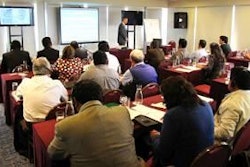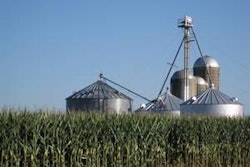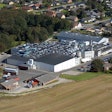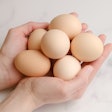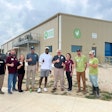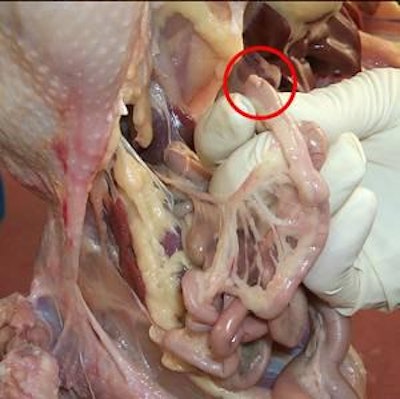
The main energy supply for the developing avian embryo is yolk, which contains carbohydrates, lipids and proteins, with lipids providing the most important source of energy to the embryo. Near the end of the incubation period, the yolk sac is internalized into the abdominal cavity and at the time of hatch, the remaining yolk comprises approximately 20% of the chick’s body weight and continues to provide immediate posthatch energy, protein and water for nourishment.
In most instances, the yolk will be depleted during the first seven days posthatch and the yolk sac will be completely absorbed, leaving only the yolk stalk, also known as the Meckel’s diverticulum attached to the small intestine (Figure 1). However, it has been observed that numerous broilers in the processing plant contain what is commonly called unabsorbed yolk contents.
In a 2005 study in the author’s lab, 49% of the broilers at market age were found to have an unabsorbed yolk sac, and 34% of the yolk sacs were attached to the yolk stalk (Figure 2) and 15% were free floating within the abdominal cavity (Figure 3).
Commercial grow-out conditions
Chicks normally forage and ingest feed following hatch, and growth commences approximately 24 hours after initiation of feed intake. However, under practical conditions, chicks may not receive feed until 36-48 hours after hatching. Therefore, numerous studies have been conducted in determining the effects of feed and water deprivation on yolk absorption and body weight gain over the course of a grow-out.
In certain instances, the yolk does not become completely absorbed. When this happens, the unabsorbed yolk can remain attached to the yolk stalk or the unabsorbed yolk can become detached and be free floating in the abdominal cavity.
Campylobacter in unabsorbed yolks
The objectives of the present studies were to determine if inoculated C. jejuni could be detected in unabsorbed yolks of broilers at the end of grow-out and if the presence of naturally occurring Campylobacter, Salmonella, types of total aerobic bacteria and Enterobacteriaceae could be isolated from attached or free-floating yolk sacs and in yolk stalks of commercial broilers.
In the first study, day-old male broiler breeder chicks were obtained from a commercial hatchery and reared as broilers. At five weeks of age, the birds were orally inoculated with 105 cfu/ml of a characterized strain of C. jejuni. One week after inoculation the birds (n=20) were stunned, bled, defeathered and the yolk stalk, attached yolk or free-floating yolk and ceca were individually analyzed for the presence of C. jejuni. The marker strain was recovered from 19 of 20 ceca, 19 of 20 yolk stalks and five of 20 free-floating unabsorbed yolks.
The presence of Campylobacter in the free-floating unabsorbed yolks suggests that the yolk stalk opening to the small intestine persists and that the unabsorbed yolks became unattached and free floating sometime after inoculation within the week prior to sampling. The significance of these unabsorbed yolks as possible reservoirs for this and other human foodborne enteropathogens in broilers and possible modes of contamination in the processing plant has yet to be determined.
Campylobacter jejuni and multiple Salmonella serovars
In the second study, 100 broiler carcasses were obtained from a commercial processing facility on each of three separate visits. The carcasses were removed from the processing line following defeathering (rehang table) and transported to the laboratory, aseptically opened and analyzed. Campylobacter spp. were found in four of 40 yolk stalks, five of 50 attached yolk sacs and one of 40 free-floating yolk sacs.
All Campylobacter isolates were determined to be C. jejuni, except for one attached yolk and yolk stalk, which were C. coli. Salmonella serovars were found in seven of 20 yolk stalks, 12 of 20 attached yolk sacs and seven of 20 free-floating yolk sacs. Eight different Salmonella serovars were detected: (S. Typhimurium, S. Montevideo, S. Manchester, S. Kentucky, S. Thompson, S. Berta, S. London and S. Schwarzengrund) with S. Typhimurium being the most prevalent serovar encountered.
In addition to the Campylobacter and Salmonella, the levels and types of total aerobic bacteria (APC) and Enterobacteriaceae (ENT) were determined from randomly selected samples of attached and free-floating yolk sacs. The APC ranged from log 3.3 to > 6.0 while the ENT ranged from log 2.8 to > 6.0. Staphylococcus spp. and Streptococcus spp. were the predominant microorganisms comprising the APC. Escherichia coli and Hafnia alveii were the predominant members of the Enterobacteriaceae family that were encountered.
Potential contamination points in processing
The unabsorbed yolks, whether free-floating or attached, can harbor numerous types of bacteria including Campylobacter and Salmonella and could be potential non-fecal contamination points in processing plants and also a source of contamination for other internal tissues and organs. Also, the mechanism by which these bacteria reach and contaminate these unabsorbed free-floating yolk sacs has not yet been determined.
The causes of unabsorbed yolks are unknown at this time. Recent research has indicated that water deprivation is not, by itself, a factor. It is possible that various stresses encountered during the hatching process or even during transport and brooding could be factors that could result in the yolk sac not being normally absorbed. Further research into this topic is warranted.


